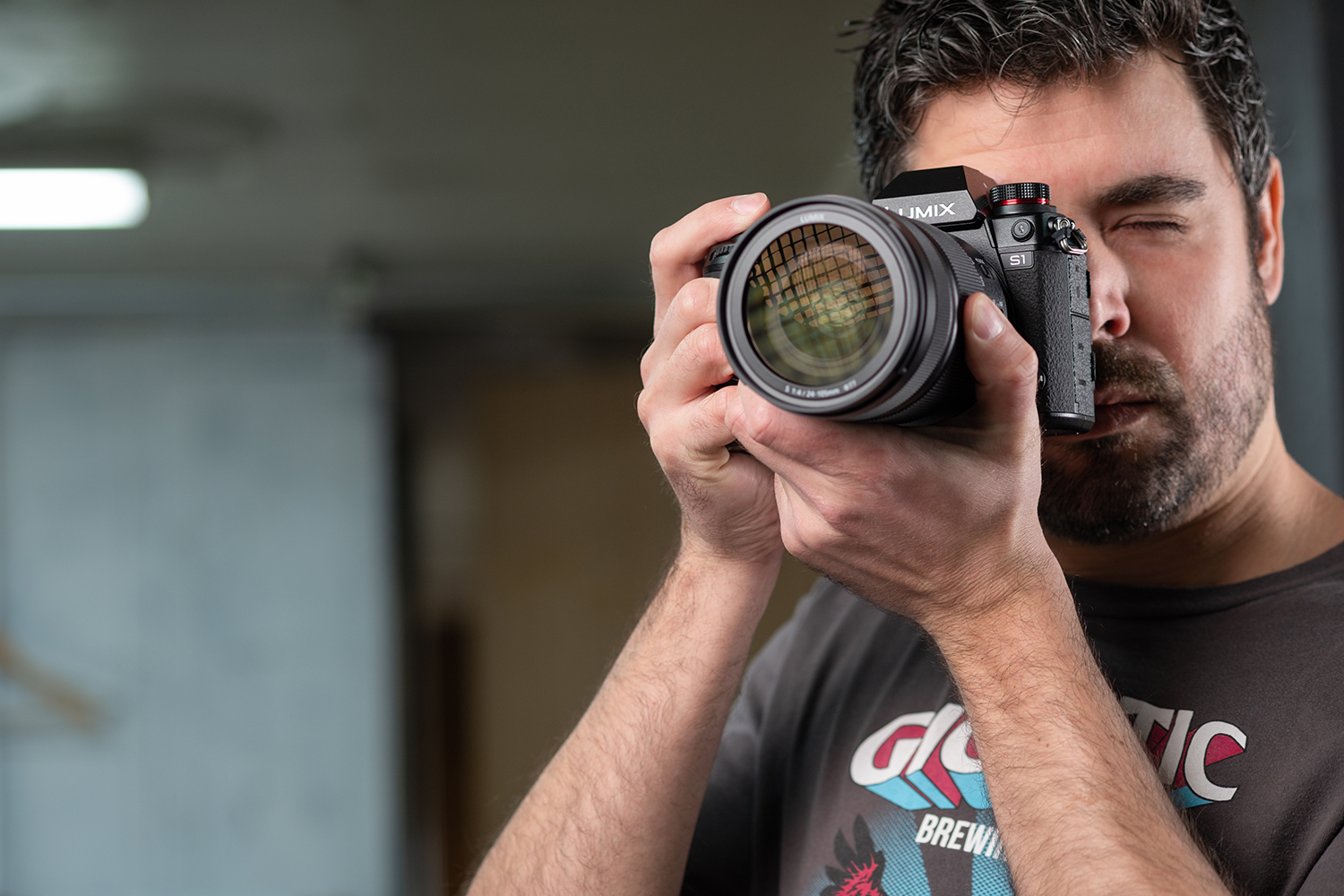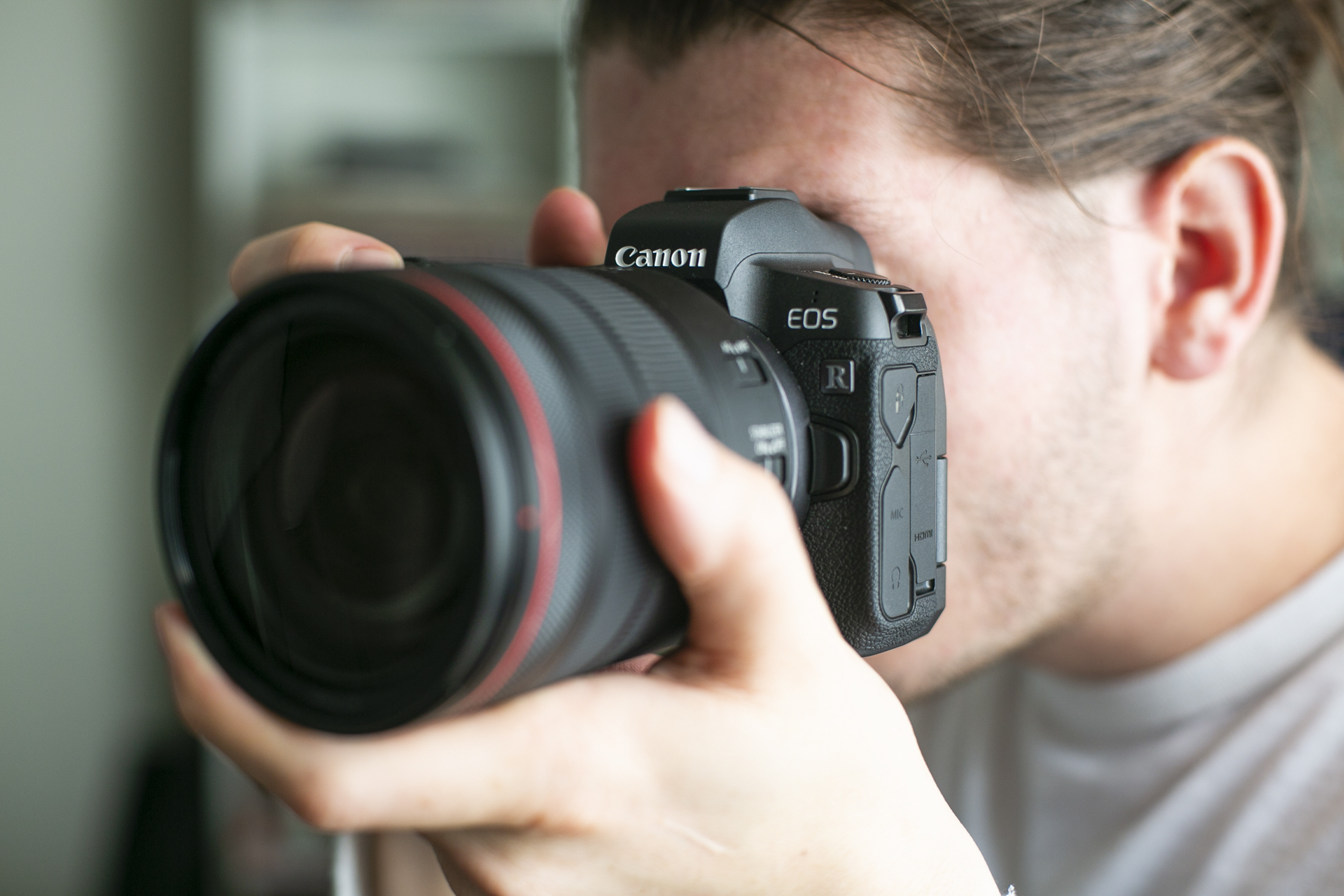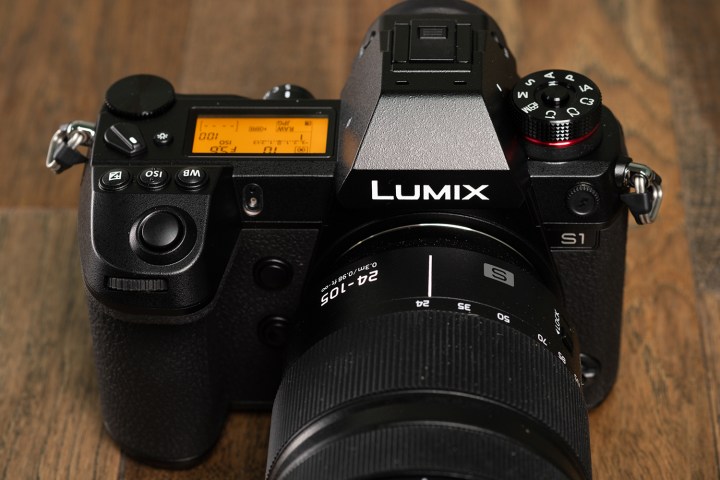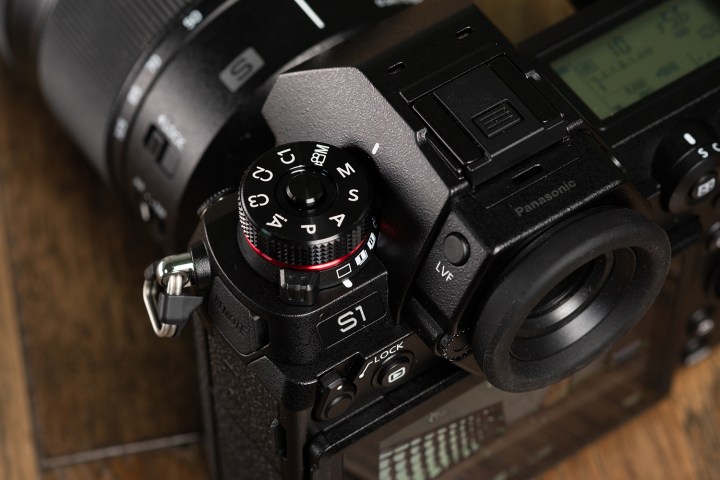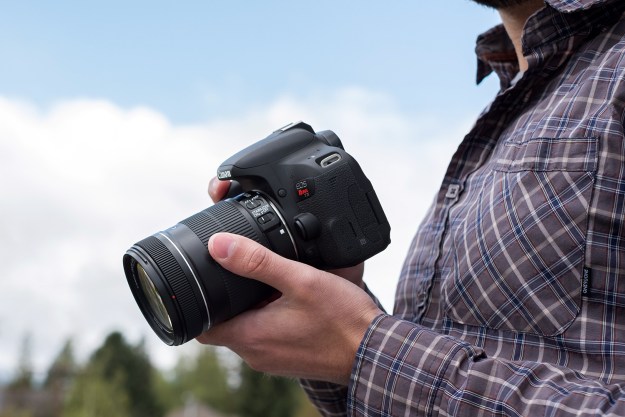The Canon EOS R and Panasonic Lumix S1 both represent their company’s first attempts at full-frame mirrorless cameras, and each manufacturer brings different competencies to the table. Canon has made many full-frame DSLRs before, while the S1 was Panasonic’s first full-frame camera, period. Panasonic has had much more experience building mirrorless cameras, however, having essentially founded the modern mirrorless era in 2008 with the Lumix G1.
So which company made the better first-generation camera? Looking at the spec sheet, the Lumix S1 stands out in some key areas, but it can be hard to determine a true winner. Further muddying the waters is the fact that the EOS R costs $500 less at the time of writing, thanks to a $300 rebate. At the full retail price of $2,300, compared to the S1 at $2,500, the decision would be a bit easier. We’ve fully reviewed both cameras, and here are our thoughts on how they compare, from autofocus performance to image quality to video features.
| Panasonic Lumix S1
|
Canon EOS R
|
|
| Sensor | 24-megapixel, full-frame sensor with 96MP high-resolution mode | 30-megapixel full-frame sensor |
| Burst speed | 9 fps (6 with AF-C) | 8 fps (5 fps with continuous AF) |
| Shutter speed | 1/8,000 to 60 sec. | 1/8000 to 30 sec. |
| ISO | 100-51,200 (50-204,800 expanded) | 100 – 40,000 (50-102,400 expanded) |
| Autofocus | 225-point contrast-detection DFD AF | Dual Pixel phase detection AF with up to 5,655 points |
| Image stabilization | 5-axis sensor-shift stabilization | (None, available in many lenses) |
| Video | 4K/30p, 4K/60p with 1.5x crop, HLG (10-bit V-Log via firmware update) | |
| Viewfinder | 5.7m-dot OLED EVF | 3.7m-dot OLED EVF |
| LCD | 3.2-inch, 2.1m-dot tilting touchscreen | 3.15-inch, 2.1m-dot tilting touchscreen |
| Connectivity | Wi-Fi, Bluetooth | Wi-Fi, Bluetooth |
| Media slots | 1 SD, 1 XQD (CFexpress support coming) | 1 SD |
| Battery | Li-ion rated for 380 shots | Li-ion rated at 330 shots |
| Dimensions (WxHxD) | 5.87 x 4.33 x 3.82 inches | 5.35 x 3.87 x 3.32 inches |
| Weight | 35.8 ounces | 23.4 ounces |
| Kit lens | Available body only or with 24-105mm f/4 | Available body only or with a 24-105mm f/4 |
| Price | $2,500 (MSRP, body-only) | $2,300 (MSRP, body-only) |
| Read more | Panasonic Lumix S1 review | Canon EOS R review |
| Buy now | Amazon | Walmart |
Sensor
A quick glance at the spec sheet and you might think the Canon comes out ahead here, with 30 megapixels compared to the Lumix’s 24. Sure, that’s arguably not a very big difference, but it will leave photographers with slightly more room to crop.
But that’s hardly the full story. If it’s maximum detail you’re after, the Lumix S1 has a high-resolution mode that creates a 96MP composite image from eight separate exposures. It can do this thanks to the sensor-shift stabilization system, which moves the sensor by half a pixel’s width in between exposures to capture additional detail, reduce the chance of moiré, and push beyond the limitations of the Bayer filter design.
High-resolution mode requires a tripod and a perfectly still subject, however, so while it’s great for landscapes and architecture, it can’t really be used for portraits, wildlife, or sports.
- 1. Shot on the Lumix S1
- 2. Shot on Canon EOS R
But that’s not the only advantage the S1 has. Its lower resolution actually helps it produce cleaner images in low light, with a maximum native ISO of 51,200, 1/3 stop above the EOS R, or a boosted maximum of 204,800, a full stop above the Canon. DxOMark’s objective measurements also put the S1 a stop above the EOS R for dynamic range at base ISO. Of course, how much of that is noticeable in the real world is debatable and depends on the scene, but the S1 sensor is capable of delivering the best of both worlds between sensitivity and resolution, putting it ahead of the Canon here.
Winner: Lumix S1
Speed
When it comes to continuous shooting performance, both the Canon and the Lumix are pretty even and are limited in similar ways, but the S1 has a slight edge. Both with and without continuous autofocus, the S1 performs 1 frame per second faster than the EOS R. It can hit a maximum of 9 fps, or 6 with continuous AF, while the Canon tops out at 8 fps, or 5 with continuous AF.
Perhaps more importantly, the S1 has a larger image buffer that can hold 75 RAW files based on our testing. The EOS R’s buffer depth is advertised at 47 RAWs, although independent tests have put it up to 65. Thanks to its high-speed XQD card, the S1 will also be faster to write those images from the buffer to the memory card, limiting downtime between high speed bursts.
To be clear, neither camera is going to offer the type of speed professional sports shooters need, but the S1 is the more capable when it comes to continuous shooting.
Winner: Lumix S1
Autofocus
Canon’s Dual Pixel Autofocus (DPAF) is one of the best autofocus technologies we’ve ever tested, and on the EOS R it offers over 5,000 individual phase-detect focus points that work together to ensure pinpoint-accurate results. It works incredibly well for both single-shot and continuous autofocus modes, although processing the data from all of those points is one reason why the EOS R’s burst rate drops to 5 fps with continuous AF on.
Panasonic’s own focusing technology, Depth from Defocus (DFD), relies instead on contrast detection, a type of autofocus that, while accurate, is traditionally much slower than phase detection. Thanks to some clever engineering, Panasonic has found a way to speed it up considerably — in the majority of situations, it is only negligibly slower than competing phase-detection systems. The S1 also boasts an impressive subject recognition mode that can track eyes, faces, and even some animals. However, we did run into occasional issues with focus hunting, something that could make you miss the critical moment.
Since DFD is essentially reliant on software alone, without a hardware component other than the imaging pixels themselves, Panasonic will likely find ways to improve it over time through firmware updates. For now, however, the EOS R has the edge.
Winner: Canon EOS R
Design
This is a hard category to judge objectively, and we always recommend getting your hands on a camera before buying it, if at all possible. What feels right to one person may feel completely off to another.
There are, however, certain design features that appeal to high-end enthusiast and professional photographers, and both of these cameras are targeting such users. To this end, we have to conclude that the Panasonic S1 offers the more capable and complete design, with more buttons and dials, a higher-resolution electronic viewfinder, and dual card slots. It also feels more robust and better made, although we can’t say for certain if it will hold up to weather or professional wear and tear any better than the Canon.
Of course, all of that comes at a cost to weight. With the battery loaded, the Lumix S1 weighs more than some professional DSLRs. If your idea of a mirrorless camera includes the descriptor “lightweight,” you may prefer the Canon, which weighs just 23.4 ounces compared to the Lumix at nearly 39. The EOS R also has a unique touch slider (pictured above) which can be programmed to control different camera settings. It’s not a feature everyone loves, but it’s worth pointing out. Still, if control, durability, and capability are what you’re after, go with the Lumix.
Winner: Lumix S1
Stabilization
While Canon offers optical stabilization on a number of its RF lenses, the EOS R does not have in-body image stabilization. The Lumix S1 uses a 5-axis sensor-shift stabilization system which, in addition to powering the high-resolution mode, provides up to 6 stops of shake reduction. It can be combined with stabilized lenses for even better performance.
In-body stabilization is something Panasonic has done for a while now in its Micro Four Thirds mirrorless systems, so it knows the technology well. Canon has yet to produce a camera with in-body stabilization, although the company has commented that it will bring the feature to future EOS R series models. For now, this is another point clearly in the Lumix S1’s basket.
Winner: Lumix S1
Video
Panasonic is well known as a video company, and the Lumix GH series (built on the smaller Micro Four Thirds format) continues to present us with some of the best video cameras you can buy. The Lumix S1 isn’t really targeting that same audience, but it still packs a punch when it comes to video features. Even compared to the more expensive Lumix S1R, it has some pretty big advantages. It can shoot oversampled 4K/30 from the full width of the sensor with no time limit, or
While the EOS R was the first Canon to receive both C-log and 10-bit output, the camera is significantly limited in other ways when it comes to video. Firstly, 4K is recorded from a severe 1.7X cropped region of the sensor, effectively smaller than even an APS-C sensor would be. Next, it suffers from pretty bad rolling shutter, a problem that can be exacerbated by the lack of in-body image stabilization. While we were actually pleased with the quality of colors out of the EOS R, it’s very hard to recommend it as a video camera, especially when the competition is so strong.
Winner: Lumix S1
Battery life
Neither of these cameras advertise strong battery life, but the S1’s massive 3,050mAh battery helps it eke out a few additional photos over the EOS R with a rating of 380 shots compared to 330. That big battery, of course, is one reason why the S1 weighs so much. For what it’s worth, the EOS R is certainly more efficient — it pulls its 330 exposures from a battery with just 1,800mAh.
Perhaps because Panasonic engineers realized how much power the Lumix S1’s 5.7-million-dot EVF was going to consume, the camera also features a special Power Save Live View Finder (LVF) Shooting mode, which somewhat mimics how a DSLR manages power. In this mode, the camera will go to sleep after a short time, but will leave some functions active, like the EVF eye sensor and shutter button. Battery life is stated as over 1,000 exposures in this mode.
Winner: Lumix S1
Lenses
You could call this in either camera’s favor, depending on your point of view. The Lumix S1 is built around the Leica L mount, which already has a collection of Leica lenses for it — but they may be prohibitively expensive (they’re made by Leica, after all). Additionally, Sigma has signed on to develop L-mount lenses, with 11 of their acclaimed Art-series lenses currently on the way. Of the three Lumix S lenses currently available from Panasonic, the S Pro 50mm f/1.4 is also one of the best 50mm lenses we’ve ever seen — of course, at $2,300, it should be.
Canon is in a different boat, being the sole brand behind its new RF mount (it also has an excellent 50mm, with an even faster f/1.2 aperture, also at $2,300). Undoubtedly, third-party manufacturers will step up with lenses for the system, but for now, you’re left with a fairly limited (and quite expensive) collection.
On the plus side, you can mount any Canon EF lens — that is, those made for the company’s DSLRs — on the EOS R via an adapter. The lenses remain fully compatible and, in our testing, offered nearly identical autofocus performance. Yes, this somewhat negates the smaller form factor of the mirrorless body, but it does mean there is a wide assortment of lenses available at a variety of prices.
So, the S1 currently has more lenses available that don’t require an adapter, but may be above your budget, while the EOS R has fewer native lenses, but more total lenses if you count those that can be easily adapted to it. We’ll give this one to the Canon, because the lack of affordable lenses is a current sore point in the Lumix S series, but if you’ve got the budget for it, you can find some excellent glass for the S1.
Winner: Canon EOS R
Picking an overall winner
The Lumix S1 is almost two cameras in one. It’s a hybrid still/video machine with excellent low-light performance from its 24MP sensor, as well as an ultra-high-resolution camera capable of shooting 96MP images when you need detail over speed. It also has an absolutely gorgeous EVF, dual memory cards, and expertly designed control layout that is built to hold up to professional use. It would seem the pretty clear winner here.
However, the EOS R is not without some advantages. The autofocus system is among the best we’ve ever seen and, at the time of writing, it’s significantly less expensive than the S1. That could make it a more valuable buy; but if money is no object, we have to lean toward the Lumix.
Editors' Recommendations
- The best full-frame cameras
- The Panasonic Lumix S5: Everything we know
- After years of waiting, Sony A7S III may arrive this summer
- Canon EOS-1D X Mark III brings stunning stills and RAW video to an impressive DSLR
- A9, A7R, S, II, or III? Making sense of Sony’s full-frame mirrorless cameras

